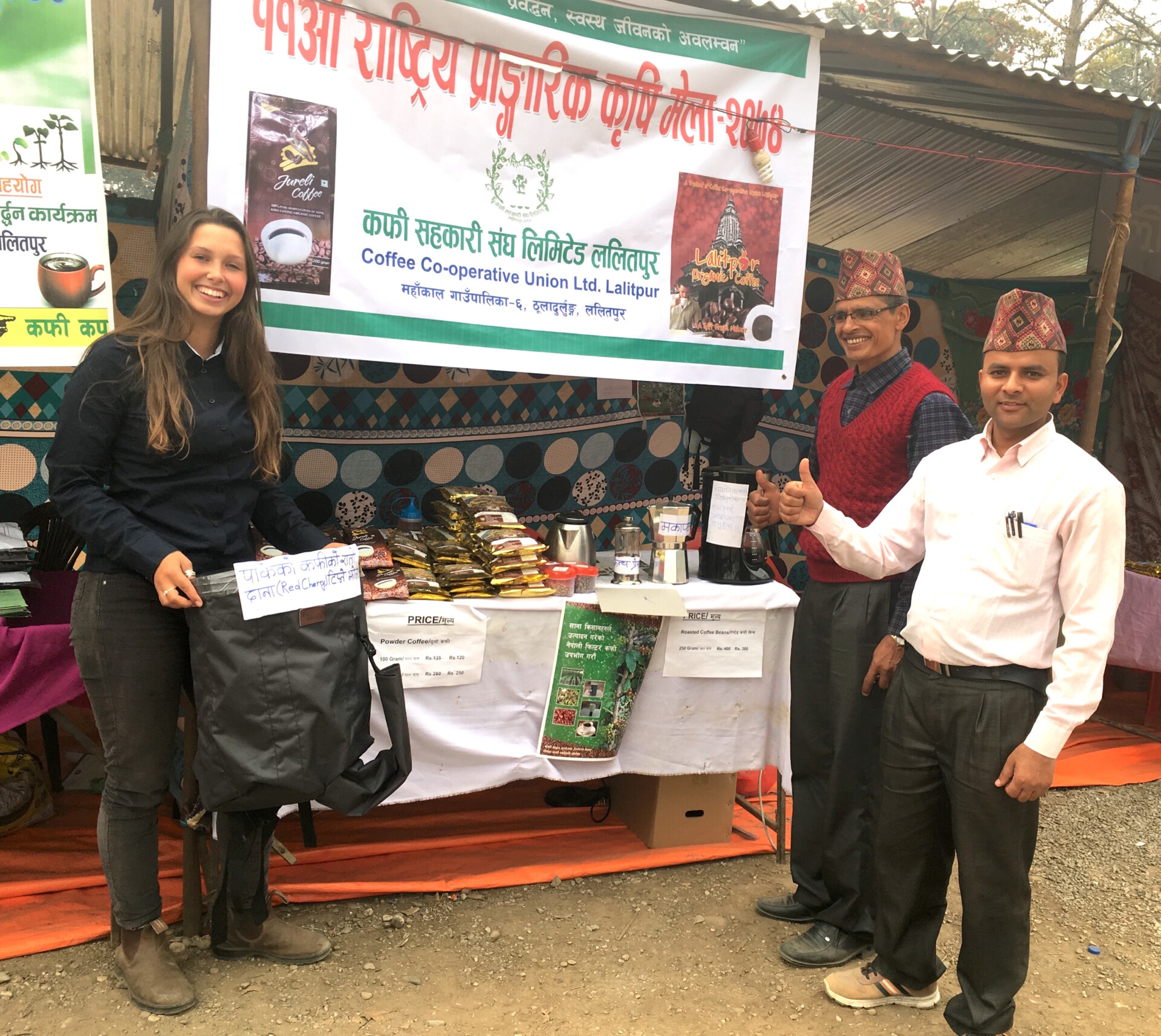
Income Disparities between Coffee Cooperatives in Nepal
There are a total of 12 coffee cooperative unions throughout Nepal, following cooperative principles and working on behalf of their farmer members, similar in structure and organization to Coffee Cooperative Union Lalitpur (CCUL) with whom I’ve been working for the past 6 months. This past week while participating in a national level organic trade fair, I had the chance to sit down and discuss the coffee sector with 3 of these cooperative unions, from the districts of Parbat, Palpa, and Kavre.

As I could have predicted, many of the significant challenges that these cooperative unions mentioned echoed those I’ve come across time and again in my work with CCUL: white stem borer and leaf rust diseases, lack of irrigation, low volume of production, and generally poor orchard management. However, it was the differences in challenges that I observed to be the most insightful, and pointed to several areas where the coffee cooperative model in Nepal could be improved.
Unlike CCUL, none of these cooperatives have direct market links with international buyers, which is where the earning potential truly lies. Kavre, for lack of international organic certification, only sells their coffee in the domestic market in Nepal. Parbat and Palpa have periodically sold coffee to America, Korea and Japan, but only through third party middle men who take a significant portion of the earnings. Although each cooperative generally sells coffee to the buyer for the same price (excluding fair trade premiums), the results in earning for the farmers are staggering. Each cooperative revealed how much their farmers earn per kilogram of ripe coffee cherry sold to the cooperative’s collection centers, and the numbers speak for themselves: Parbat farmers earn 80 rs/kg, Palpa earn 85rs/kg, and Kavre earn 100rs/kg. In comparison, CCUL farmers of Lalitpur earn a guaranteed 113 rs/kg, nearly 40% higher than farmers earnings from Parbat, for generally the same work, effort and coffee quality. For these rural farming communities who rely majorly on the income generated from coffee production, these income discrepancies are extremely significant.

However, the proportionality of farmer earnings goes beyond the effectiveness of international and domestic market linkages. I have witnessed that a significant amount of a cooperative success can stem from the dedication of the union’s leadership and staff. Palpa, for example, has no permanent staff, meaning that the official dealings such as accounting and marketing are dealt with sporadically and ineffectively. In contrast, CCUL’s current chairperson and office manager have been involved with the cooperative since its inception, and go above and beyond their calls of duty to promote Lalitpur coffee. This includes attending national level expos, participating in trainings to improve their capacity, and subscribing to additional brand boosting associations such as Fair Trade Group Nepal membership. In reality, it is a combination of an international buyer paying a Fairtrade premium, cutting out middle men, and a transparent and systematic system that allows CCUL to retain less of the earnings for operating costs and provide farmers who deserve it with such a large proportion of earnings in comparison to other coffee cooperatives in Nepal. Although there is always room for improvement, Coffee Cooperative Union Lalitpur’s model is a case study for other coffee cooperatives in building economically and socially prosperous communities.
